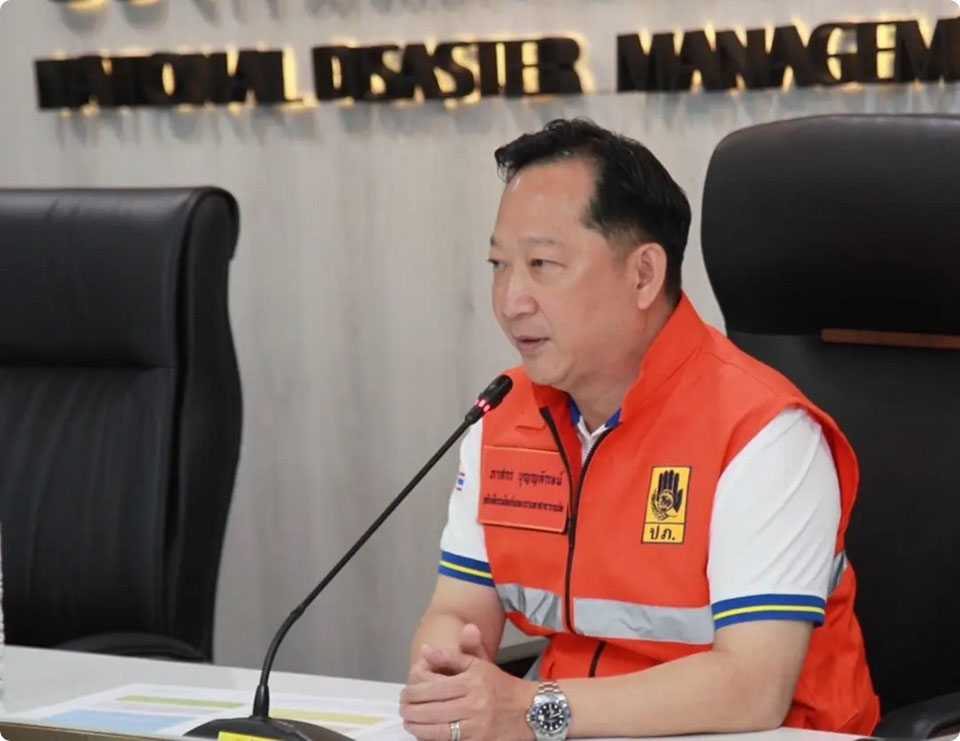
BANGKOK, Thailand – Government officials have taken part in a high-level coordination meeting to advance ongoing disaster response efforts following the March 28 earthquake, which has caused damage across 18 provinces and affected hundreds of structures. The National Command Center for Disaster Prevention and Mitigation convened officials at its central command center in Bangkok yesterday (Apr 1) to assess the impact and ensure relief operations continue at full capacity. Since the earthquake, authorities have worked across multiple sectors to inspect buildings, restore infrastructure, and support affected communities.
Department of Disaster Prevention and Mitigation (DDPM) Director-General Pasakorn Boonyalak confirmed that tremors were felt in 63 provinces, with physical damage reported in 104 districts, 278 sub-districts, and 416 villages. Eighteen provinces, including Chiang Mai, Chiang Rai, Phayao, Lamphun, Lampang, Mae Hong Son, Phrae, Nan, Phetchabun, and several in central Thailand, have reported damage to 591 homes, 68 temples, 94 hospitals, 11 other buildings, 62 schools, and 29 government facilities. The earthquake has resulted in 19 deaths (as of April 1), all in Bangkok, and 34 injuries, the majority also in the capital.
In Bangkok, Kamphaeng Phet 2 Road has been partially reopened to allow rescue operations to continue safely in the area surrounding the collapsed building in Chatuchak district. Traffic management has been adjusted to support recovery activities. Public transport is operating normally across all mass transit lines except the Pink Line, which remains under inspection near Min Buri Station. The Ministry of Transport has arranged shuttle buses operated by the Bangkok Mass Transit Authority to assist commuters during the disruption.
Search and rescue operations are ongoing at the collapse site using heavy machinery and specialized response teams. A total of 355 buildings have been inspected so far across the city, with more assessments underway. Residents are encouraged to report damaged structures through the Traffy Fondue platform, which connects them with volunteer engineers for evaluation and guidance. The Department of Public Works and Town & Country Planning is conducting detailed inspections of government buildings, high-rise private sector properties, and residential homes. In other provinces, local public works offices have been ordered to accelerate inspections of critical locations such as hospitals and busy public buildings.
Mental health support is being delivered through a three-part service led by the Ministry of Public Health. On-site assistance teams are visiting hospitals, disaster zones, and homes of affected families. Telephone-based help is available through national mental health helplines 1323 and 1667. Public awareness campaigns are also being carried out through the media to discourage the spread of distressing content and ensure families receive respectful coverage.
Since the main earthquake on March 28, the Thai Meteorological Department has recorded 236 aftershocks, none of which have posed a further threat to the country. Agencies have been instructed to complete damage assessments and relief measures in line with national regulations, particularly in densely populated areas, residential complexes, workplaces, and hospitals. (NNT)










